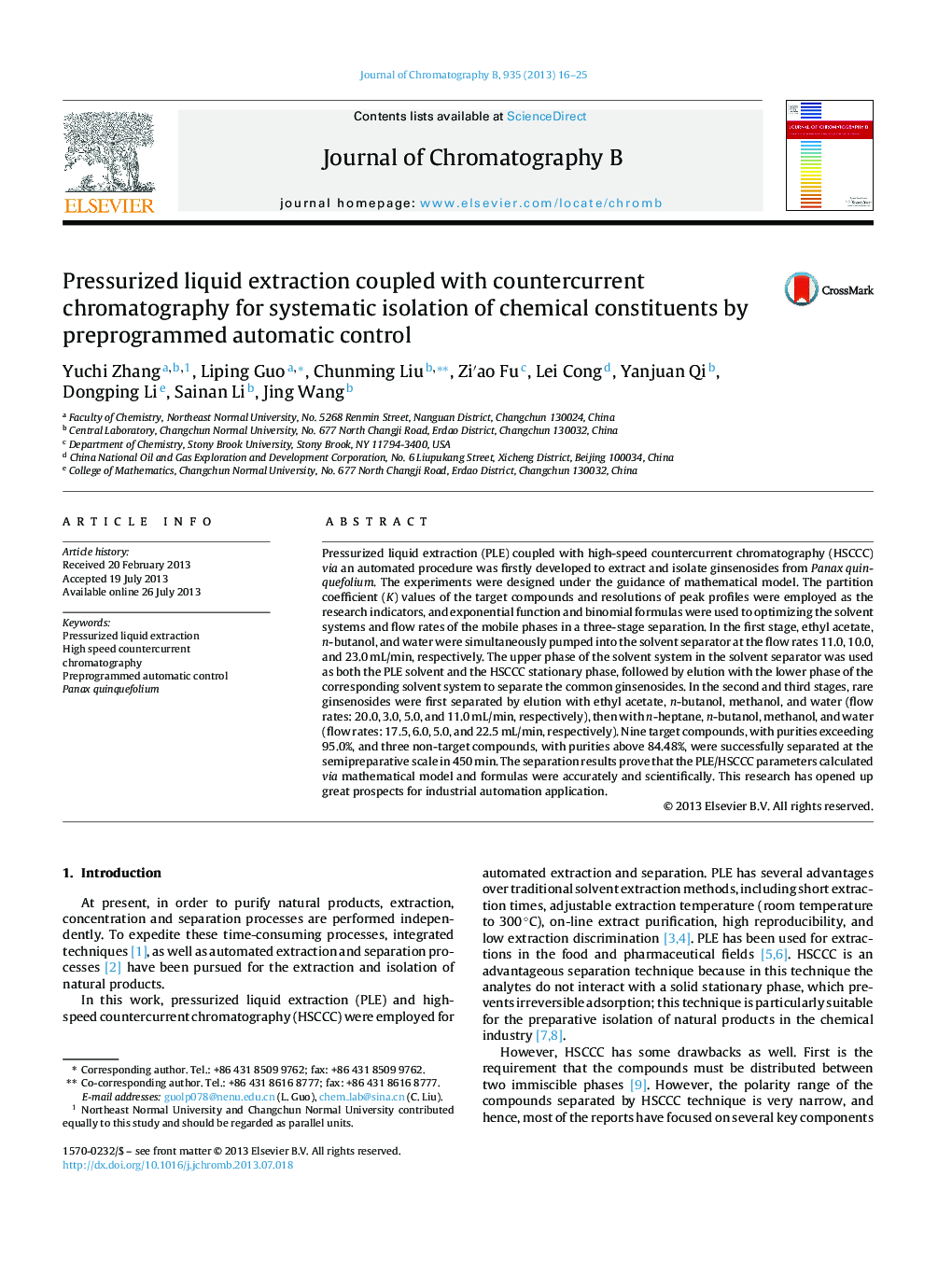| Article ID | Journal | Published Year | Pages | File Type |
|---|---|---|---|---|
| 7618082 | Journal of Chromatography B | 2013 | 10 Pages |
Abstract
Pressurized liquid extraction (PLE) coupled with high-speed countercurrent chromatography (HSCCC) via an automated procedure was firstly developed to extract and isolate ginsenosides from Panax quinquefolium. The experiments were designed under the guidance of mathematical model. The partition coefficient (K) values of the target compounds and resolutions of peak profiles were employed as the research indicators, and exponential function and binomial formulas were used to optimizing the solvent systems and flow rates of the mobile phases in a three-stage separation. In the first stage, ethyl acetate, n-butanol, and water were simultaneously pumped into the solvent separator at the flow rates 11.0, 10.0, and 23.0Â mL/min, respectively. The upper phase of the solvent system in the solvent separator was used as both the PLE solvent and the HSCCC stationary phase, followed by elution with the lower phase of the corresponding solvent system to separate the common ginsenosides. In the second and third stages, rare ginsenosides were first separated by elution with ethyl acetate, n-butanol, methanol, and water (flow rates: 20.0, 3.0, 5.0, and 11.0Â mL/min, respectively), then with n-heptane, n-butanol, methanol, and water (flow rates: 17.5, 6.0, 5.0, and 22.5Â mL/min, respectively). Nine target compounds, with purities exceeding 95.0%, and three non-target compounds, with purities above 84.48%, were successfully separated at the semipreparative scale in 450Â min. The separation results prove that the PLE/HSCCC parameters calculated via mathematical model and formulas were accurately and scientifically. This research has opened up great prospects for industrial automation application.
Related Topics
Physical Sciences and Engineering
Chemistry
Analytical Chemistry
Authors
Yuchi Zhang, Liping Guo, Chunming Liu, Ziâ²ao Fu, Lei Cong, Yanjuan Qi, Dongping Li, Sainan Li, Jing Wang,
